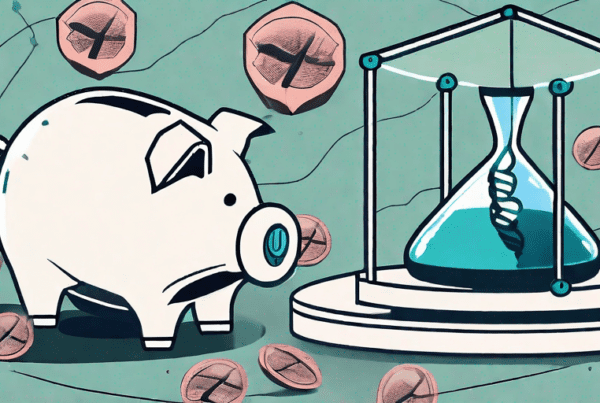
In the intricate realm of life sciences, insurance plays a pivotal role in safeguarding against unforeseen risks and liabilities. It is a shield that protects businesses and innovators in this rapidly evolving sector. But have you ever wondered about the factors that influence life sciences insurance costs? To shed light on this important topic, we have reached out to industry experts who will unveil the complexity of life sciences insurance expenses. Join us in unraveling the intricacies of this critical domain.
Understanding Life Sciences Insurance
Before diving into the realm of insurance costs, it is crucial to grasp the importance of insurance in the realm of life sciences. Insurance serves as a safety net that shields companies from potential financial and legal crises. By mitigating risks associated with product development, clinical trials, and regulatory compliance, insurance provides a vital layer of protection.
The key components of life sciences insurance encompass diverse coverage areas that safeguard against litigation, product recalls, property damage, and more. By comprehending these different aspects, businesses can efficiently allocate resources and secure adequate coverage tailored to their specific needs.
The Importance of Insurance in Life Sciences
In the rapidly advancing field of life sciences, insurance acts as a crucial mechanism to manage risk. It serves as a shield against unforeseen events, including clinical trial complications, product liability lawsuits, and regulatory disputes. By having comprehensive insurance coverage, companies can focus on driving innovation and growth while minimizing potential financial setbacks.
Moreover, insurance is not just a reactive measure—it also plays a proactive role in facilitating business expansion and investment. Investors and partners often require proof of adequate insurance coverage to mitigate their own risks, highlighting the integral role insurance plays in establishing trust and credibility within the industry.
Key Components of Life Sciences Insurance
Life sciences insurance encompasses a wide range of coverage areas tailored to the unique risks faced by the industry. Some key components include:
- Product Liability Insurance: This protects companies against claims arising from injuries or damages caused by their products.
- Clinical Trial Insurance: Designed specifically for companies conducting clinical trials, this coverage shields against unexpected adverse events and related liabilities.
- Property Insurance: Protects physical assets, such as laboratories, offices, and manufacturing facilities, from damages caused by fire, theft, or natural disasters.
- Intellectual Property Insurance: Safeguards against the risk of intellectual property infringement claims.
- Directors and Officers Liability Insurance: Covers the legal costs and damages associated with lawsuits targeting company directors and officers.
Understanding these components is essential to comprehending the multifaceted nature of life sciences insurance and its impact on costs.
Factors Influencing Life Sciences Insurance Costs
The cost structure of life sciences insurance is influenced by a myriad of factors, ranging from the intricacies of the actual research and development process to compliance with stringent regulations. Expanding on these factors, we will explore the role of research and development (R&D) and regulatory compliance, shedding light on their impact on insurance premiums.
Role of Research and Development in Insurance Costs
Research and development form the backbone of the life sciences industry. They serve as the driving force behind groundbreaking innovations. However, the R&D process also introduces risks that impact insurance costs. As companies push the boundaries of scientific knowledge, they are exposed to increased uncertainties. This heightened exposure translates into higher insurance premiums, reflecting the potential financial risks associated with experimental treatments and unproven technologies.
Furthermore, the stage of development also plays a crucial role in determining insurance costs. Clinical trials designed to test the efficacy and safety of new drugs or medical devices present unique risks that insurers consider when determining coverage costs. The more advanced and mature a product is in the development process, the lower the perceived risk and subsequent insurance premium.
Impact of Regulatory Compliance on Insurance Premiums
In the highly regulated world of life sciences, compliance with governmental regulations is paramount. Stringent regulatory requirements not only ensure patient safety but also impact insurance costs. Insurers consider a company’s ability to adhere to these regulations when calculating premiums.
Companies that demonstrate comprehensive compliance frameworks, robust quality assurance processes, and effective risk management strategies often enjoy lower insurance costs. Conversely, non-compliance with regulatory standards can result in higher premiums. Proactive measures to mitigate regulatory risks, such as diligent record-keeping and adherence to best practices, can positively influence insurance rates.
Unveiling the Cost Structure of Life Sciences Insurance
To truly understand life sciences insurance costs, it is crucial to decode the premium calculation methodology and uncover any hidden costs lurking beneath the surface. In this section, we will delve into the intricacies of the cost structure and expose potential hidden expenses.
Decoding the Premium Calculation
Premium calculation in the life sciences insurance sector is a complex process that takes various factors into account. Insurers evaluate the unique risks associated with the company, including its size, revenue, product complexity, and geographical presence. They analyze historical claims data and industry benchmarks to assess the potential risks and liabilities faced by the insured.
Factors such as the company’s risk management strategies, compliance track record, and quality assurance practices heavily influence the final premium. By providing insurers with comprehensive information and adopting proactive risk mitigation techniques, companies can negotiate favorable premiums and minimize insurance costs.
Hidden Costs in Life Sciences Insurance
While the upfront cost of insurance premiums is the most visible expense, it is essential to be aware of potential hidden costs. These costs may arise from policy exclusions, sub-limits, deductibles, or other terms and conditions that limit coverage in certain scenarios.
It is crucial for businesses to thoroughly review insurance policies to ensure they are fully aware of any potential limitations or exclusions. Collaborating with knowledgeable insurance brokers who specialize in the life sciences industry can help identify hidden costs and navigate the complex insurance landscape, ultimately optimizing coverage and reducing unforeseen expenses.
Expert Insights on Life Sciences Insurance Costs
Industry leaders and experts have invaluable insights when it comes to navigating the intricacies of insurance costs within the life sciences sector. Leveraging their experiences and expertise, we explore their opinions on the factors affecting life sciences insurance expenses and their predictions for the future.
Industry Leaders Weigh In on Insurance Costs
Sage advice from industry leaders sheds light on the factors that can influence life sciences insurance costs. They emphasize the crucial role of risk management, urging businesses to prioritize safety, quality, and regulatory compliance in order to secure favorable insurance rates. Their experiences and recommendations serve as guiding beacons for aspiring innovators in the life sciences sector.
Future Predictions for Life Sciences Insurance Costs
Experts predict that life sciences insurance costs are likely to continue evolving in response to industry advancements and changing regulatory landscapes. The introduction of novel technologies, such as gene editing and artificial intelligence, will undoubtedly reshape the risk landscape, potentially affecting insurance costs.
Moreover, as regulatory bodies enhance their focus on patient safety and compliance, businesses may experience increased scrutiny and potential additional costs. It is crucial for organizations to stay informed, adapt to the evolving insurance environment, and proactively manage risks to maintain optimal cost structures.
Strategies for Managing Life Sciences Insurance Costs
While insurance costs within the life sciences industry may seem daunting, there are strategies businesses can employ to manage and optimize their insurance expenses. By implementing effective risk management techniques and exploring cost-effective insurance solutions, companies can navigate this crucial aspect of their operations.
Risk Management Techniques
Recognizing and managing risks is a cornerstone of sustainable business growth. By implementing robust risk management practices, companies can reduce the likelihood of claims, decrease insurance costs, and improve overall operational efficiency. This involves adopting comprehensive quality assurance processes, stringent adherence to regulatory requirements, and a proactive approach to identifying and mitigating potential risks.
By cultivating a culture of safety and investing in employee training, companies can enhance risk awareness and embed risk management practices throughout their organization. This not only improves insurability but also highlights their role as a mentor guiding clients towards success and resilience.
Cost-Effective Insurance Solutions for Life Sciences
Beyond risk management, exploring cost-effective insurance solutions is essential for optimizing insurance costs. Collaborating with specialized insurance brokers who possess extensive knowledge of the life sciences industry can facilitate the identification of tailored insurance coverage that aligns with the specific needs of a business.
Insurance brokers can leverage their expertise to negotiate favorable terms, identify potential cost savings, and ensure comprehensive coverage without compromising critical aspects of protection. By harnessing these cost-effective solutions, companies can strike a balance between adequate coverage and manageable insurance costs.
In Conclusion
Life sciences insurance costs are a multifaceted aspect of the industry that requires careful consideration and proactive management. By understanding the key components of insurance, including product liability, clinical trials coverage, and property insurance, businesses can make informed decisions and mitigate potential financial risks.
Furthermore, comprehending the factors influencing insurance costs, such as research and development complexities and regulatory compliance, empowers companies to optimize their cost structures.
With expert insights and predictions guiding the way, businesses can embrace risk management techniques and explore cost-effective solutions to successfully navigate the insurance landscape. By leveraging these strategies, life sciences entities can focus on pioneering groundbreaking innovations while ensuring financial stability and resilience in an ever-evolving industry.



